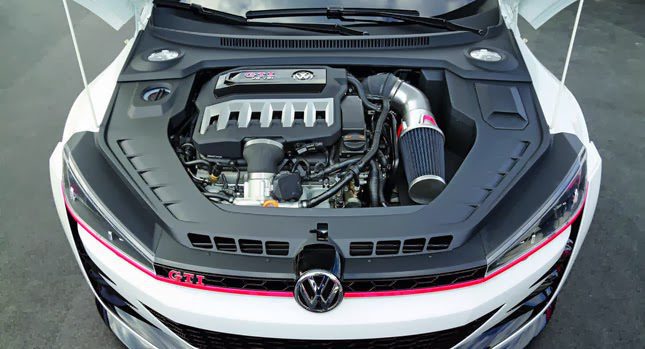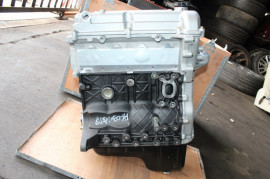Exploring the current Technical Developments in Import Engines and Exactly How They Improve Driving Experience
In the world of auto design, the landscape of import engines is undergoing a profound change driven by advanced technological technologies. From the evolution of turbocharged engines to the integration of hybrid technology, the most up to date developments are reinventing the driving experience in means formerly unbelievable. As import manufacturers push the boundaries of performance and efficiency through enhanced gas shot systems and innovative engine monitoring remedies, the inquiry emerges: Just how do these innovations truly influence the means we connect with our automobiles when traveling?

Development of Turbocharged Engines
In the vehicle market, the evolution of turbocharged engines has significantly changed the landscape of performance and effectiveness. Turbocharging, once primarily seen in high-performance sporting activities autos, has currently end up being a mainstream innovation embraced by a variety of vehicles, from portable hatchbacks to high-end sedans. The basic principle behind a turbocharged engine is simple yet reliable - by compeling more air into the burning chamber, it enables even more gas to be burned, causing boosted power output.
Among the essential advantages of turbocharged engines is their ability to supply more power from smaller, a lot more fuel-efficient engines. This downsizing fad has led to a decrease in emissions without endangering performance, making turbocharging an attractive alternative for automakers making every effort to satisfy stringent ecological regulations. In addition, turbocharged engines provide boosted torque at lower RPMs, supplying chauffeurs with a much more vibrant and receptive driving experience - import engines.
As modern technology continues to development, we can anticipate further technologies in turbocharging, leading to even better levels of performance and effectiveness in the vehicle market.
Advancements in Fuel Shot Equipments
With the constant development of auto technology, considerable improvements have actually been made in gas shot systems. Modern gas injection systems have developed to provide gas extra efficiently and precisely into the engine cylinders, enhancing overall engine performance and fuel effectiveness. One of the crucial advancements in gas shot systems is the change from typical port gas shot (PFI) to advanced direct fuel injection (DFI) technology. DFI systems inject fuel directly into the combustion chamber at high pressures, resulting in better fuel atomization and combustion, causing enhanced power result and lowered discharges.
Additionally, the integration of digital control systems (ECUs) and sensors in fuel shot systems has actually enabled for real-time adjustments to sustain shipment based on various factors such as engine lots, temperature level, and driving conditions. This level of precision makes sure optimum fuel-air blend ratios, making best use of engine effectiveness while reducing gas usage and emissions. In addition, improvements in fuel injector design, materials, and spray patterns have actually added to cleaner burning and smoother engine operation. In verdict, the constant innovations in gas injection systems play a critical role in boosting driving experience by offering better performance, gas economic content climate, and ecological friendliness.
Combination of Crossbreed Technology
The development of gas shot systems towards higher effectiveness and efficiency has set the stage for the smooth assimilation of crossbreed technology into contemporary engines. Crossbreed modern technology combines making use of standard inner combustion engines with electric propulsion systems, providing enhanced gas effectiveness and lowered exhausts. By incorporating electric motors and batteries into the powertrain, hybrid engines can supplement the internal combustion engine during acceleration or low-speed driving, thus improving general efficiency.

Improved Engine Administration Systems
What are the essential advancements in engine monitoring systems that are boosting the performance and efficiency of modern-day engines? Engine administration systems have undertaken substantial innovations to enhance engine performance and performance.
Moreover, modern engine monitoring systems use sophisticated formulas and expert system to examine the information collected by sensing units and make dynamic changes to aspects such as ignition timing, fuel shot, and turbocharger boost stress. This level of accuracy and adaptability cause improved engine responsiveness, raised power output, and decreased gas usage.
In addition, engine administration systems currently feature innovative diagnostic abilities that can spot and resolve issues such as misfires, sensing unit malfunctions, and fuel system abnormalities in real-time, therefore enhancing general engine integrity and longevity. These improvements in engine management systems play a critical role in improving the driving experience by supplying optimal performance, gas efficiency, and dependability.
Impact of Lightweight Materials
Including light-weight materials in engine manufacturing has actually changed the automobile market's strategy to enhancing fuel effectiveness and efficiency. The usage of products such as carbon fiber, aluminum, and titanium has actually dramatically reduced the overall weight of engines, resulting in boosted power-to-weight proportions and increased fuel economic climate. These see light-weight products use a greater strength-to-weight proportion compared to typical products like steel, allowing for greater sturdiness without jeopardizing efficiency.
Among the crucial advantages of link utilizing light-weight materials in engine building and construction is the decrease of inertia, causing quicker engine feedback times and boosted total lorry dexterity. Furthermore, the lighter weight adds to reduce energy consumption, making vehicles more environmentally pleasant by minimizing discharges.
Moreover, the application of lightweight materials in engine parts such as pistons, attaching poles, and crankshafts has enabled designers to press the limits of performance without sacrificing reliability (import engines). This innovation has actually led the way for much more effective and powerful engines that deliver a premium driving experience while satisfying strict emissions criteria
Final Thought
In final thought, the latest technical advancements in import engines have significantly boosted the driving experience. From the development of turbocharged engines to advancements in gas injection systems, assimilation of hybrid modern technology, improved engine management systems, and the usage of lightweight materials, these innovations have actually collectively enhanced performance, fuel efficiency, and general driving characteristics. As innovation proceeds to advancement, we can anticipate even extra interesting growths in the future of import engines.
Modern gas injection systems have actually evolved to provide gas much more successfully and precisely into the engine cyndrical tubes, enhancing total engine efficiency and fuel performance - import engines. By integrating electrical motors and batteries into the powertrain, hybrid engines can supplement the inner combustion engine during velocity or low-speed driving, therefore enhancing general efficiency
What are the key improvements in engine monitoring systems that are enhancing the performance and performance of modern engines? Engine administration systems have gone through substantial advancements to enhance engine performance and effectiveness. From the advancement of turbocharged engines to advancements in fuel injection systems, combination of crossbreed modern technology, enhanced engine administration systems, and the use of light-weight materials, these advancements have actually jointly boosted performance, fuel efficiency, and overall driving dynamics.